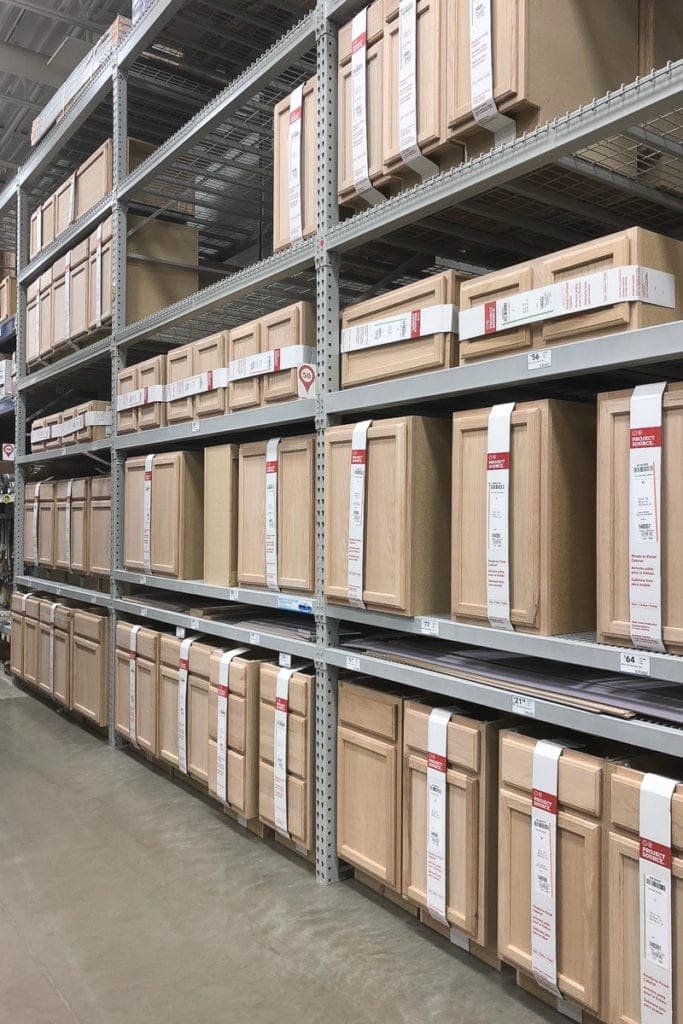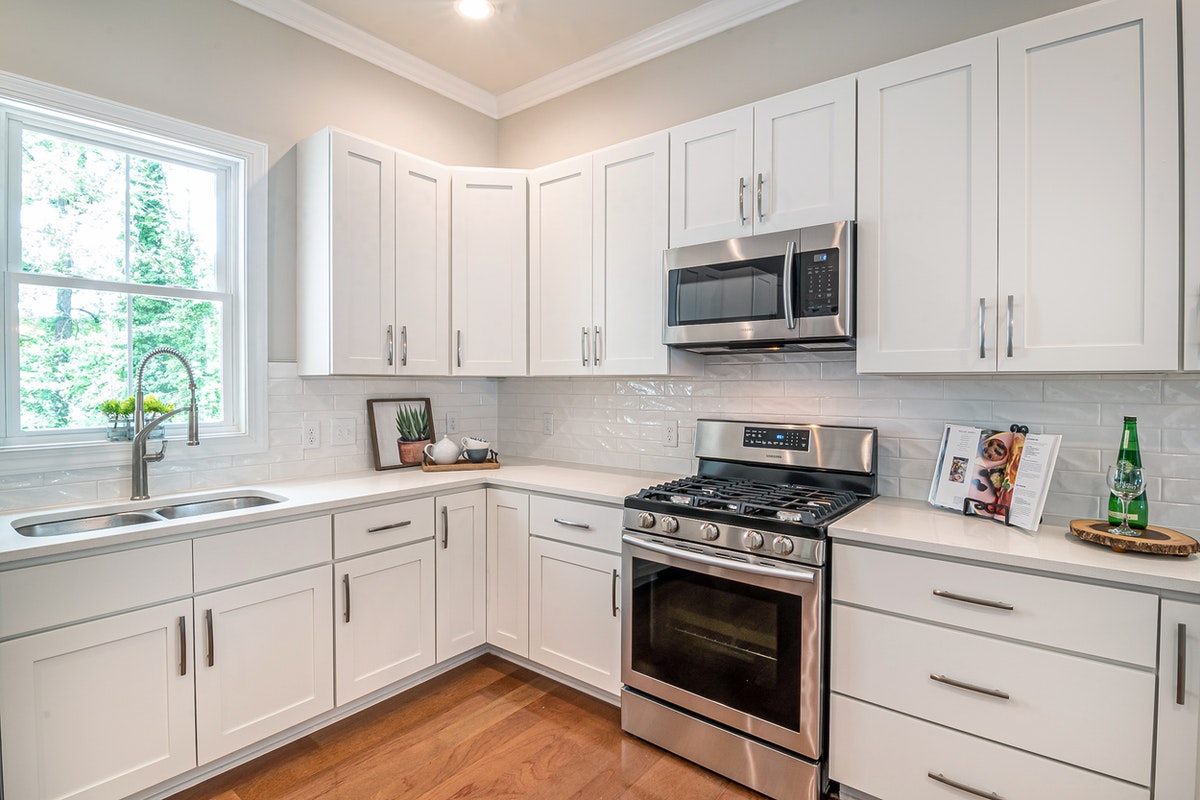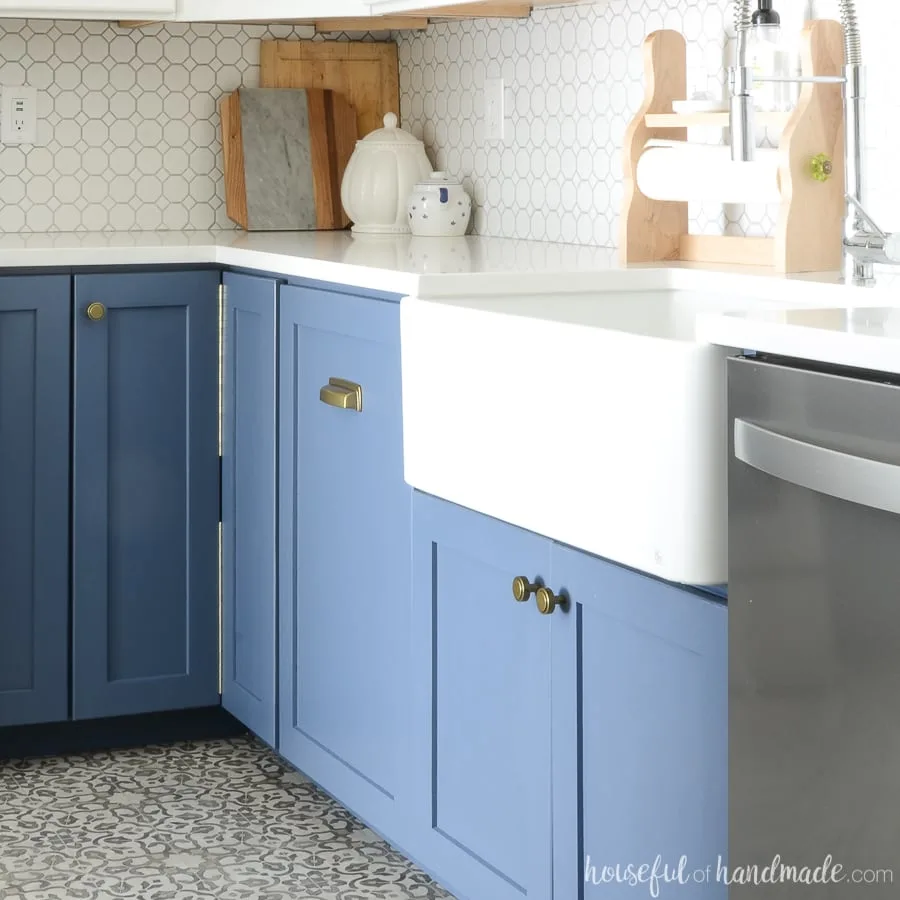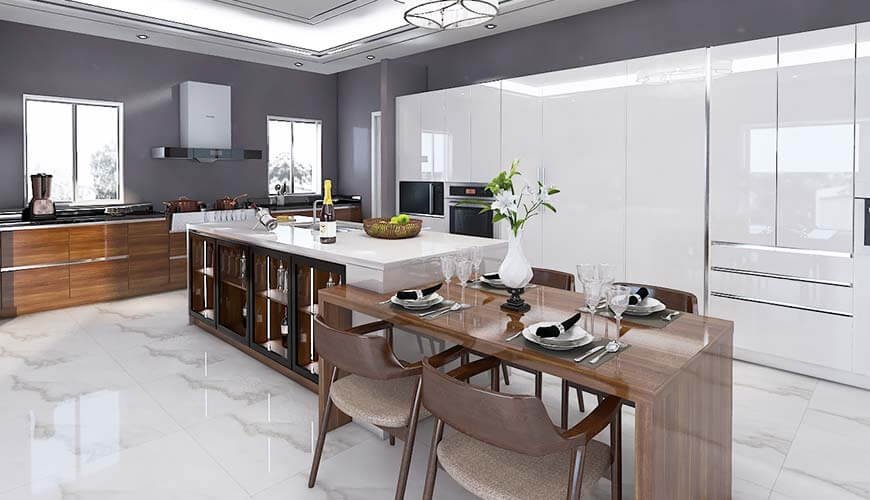Before buying kitchen cabinets, consider your budget and the material quality. These factors determine durability and aesthetics.
Selecting the right kitchen cabinets enhances both functionality and style in your kitchen. Cabinets come in various materials, such as wood, laminate, and metal. Each material offers different benefits and price points. Space planning is crucial; ensure your cabinets fit well within your kitchen layout.
Think about storage needs, as well as the cabinet style that complements your décor. Custom, semi-custom, and stock cabinets provide varying levels of customization. Research reputable manufacturers and read reviews to make an informed decision. Investing in high-quality cabinets can improve your kitchen’s value and longevity. With careful planning, you can find cabinets that meet your needs and budget.

Table of Contents
ToggleChoosing The Right Material
Choosing the right material for your kitchen cabinets is crucial. It affects durability, appearance, and cost. Let’s explore three popular materials: Solid Wood, Plywood, and MDF. Understanding each can help you make an informed decision.
Solid Wood
Solid wood is a timeless choice for kitchen cabinets. Its natural beauty and durability make it a favorite. Here are the key benefits of solid wood:
- Durability: Solid wood is strong and can last for decades.
- Appearance: It offers unique grain patterns and colors.
- Customization: Easy to stain or paint to match any decor.
There are a few considerations:
- Cost: Solid wood can be expensive.
- Maintenance: Needs regular care to prevent damage.
- Expansion: Can expand or contract with humidity changes.
Plywood
Plywood is another popular material for kitchen cabinets. It is made from thin layers of wood veneer glued together.
Here are the advantages of plywood:
- Strength: Plywood is strong and stable.
- Cost-effective: It is generally less expensive than solid wood.
- Lightweight: Easier to handle and install.
Consider these points about plywood:
- Surface: May require a veneer for a smooth finish.
- Quality: Varies, so choose a high-grade plywood.
Mdf
MDF stands for Medium-Density Fiberboard. It is made from wood fibers and resin. MDF is a cost-effective option for kitchen cabinets.
Benefits of MDF include:
- Affordability: MDF is cheaper than solid wood and plywood.
- Consistency: Has a smooth surface without knots.
- Painting: Ideal for painted cabinets.
Some considerations for MDF:
- Durability: Not as strong as solid wood or plywood.
- Moisture: Can swell if exposed to water.

Cabinet Styles And Designs
Choosing the right cabinet styles and designs is crucial for any kitchen remodel. The style of your kitchen cabinets will set the tone for your entire kitchen. There are several popular styles to choose from, each with its unique appeal.
Shaker
The Shaker style is one of the most popular cabinet styles. It features a simple, clean design with a flat center panel and square edges. Shaker cabinets are known for their minimalistic look, which makes them versatile. They can fit in both traditional and modern kitchens.
- Clean lines
- Flat center panel
- Square edges
- Minimalistic design
Shaker cabinets are often made from high-quality wood. You can choose from a variety of finishes to match your kitchen’s color scheme. They are durable and easy to clean, making them a practical choice.
Flat-panel
Flat-panel cabinets, also known as slab cabinets, have a sleek, modern look. They feature a single, flat panel with no frames. This creates a smooth, clean surface that is easy to maintain. Flat-panel cabinets are perfect for contemporary kitchens.
| Feature | Details |
|---|---|
| Design | Sleek and modern |
| Surface | Single, flat panel |
| Maintenance | Easy to clean |
Flat-panel cabinets often come in a variety of materials, including wood, laminate, and metal. Their modern design makes them ideal for urban and contemporary home settings.
Inset
Inset cabinets offer a classic and elegant look. The doors and drawers are set inside the cabinet frame, providing a smooth, flush finish. Inset cabinets are known for their craftsmanship and durability.
- Classic look
- Elegant finish
- Flush with the frame
- High craftsmanship
These cabinets are often custom-made, which allows for precise fitting and alignment. Inset cabinets can be more expensive but their timeless appeal and durability make them a worthwhile investment.
Understanding Cabinet Finishes
Choosing the right cabinet finish can transform your kitchen. The finish affects both the look and durability of your cabinets. Let’s dive into the different types of cabinet finishes.
Painted
Painted cabinets offer a clean and smooth appearance. They are available in any color imaginable. This option is perfect for achieving a modern or traditional look. Painted finishes are also great for hiding wood grain.
- Pros: Versatile, hides wood imperfections, wide color choices.
- Cons: Can chip over time, requires touch-ups.
Stained
Stained cabinets highlight the natural beauty of the wood. They come in various shades, from light to dark. Stains enhance the wood grain and add warmth to your kitchen.
- Pros: Highlights wood grain, adds warmth, durable.
- Cons: Limited color options, shows wood imperfections.
Glazed
Glazed cabinets have an extra layer of coating. This adds depth and character to the finish. Glazing can be applied over both painted and stained cabinets.
- Pros: Adds depth, unique look, protects finish.
- Cons: Can be costly, may require professional application.
Measuring Your Space
Accurate measurements are key when buying kitchen cabinets. It ensures they fit perfectly. Let’s explore how to measure your space correctly.
Accurate Dimensions
First, get a tape measure, pencil, and paper. Follow these steps:
- Measure the length of each wall.
- Measure the height from floor to ceiling.
- Measure windows and doors, including trim.
- Note the location of appliances and plumbing.
Use a laser measure for more precision. Accurate dimensions prevent fitting issues later.
Layout Planning
After measuring, plan your kitchen layout. Consider these:
- Work triangle: Sink, stove, and fridge should form a triangle.
- Storage needs: Plan for enough cabinets and drawers.
- Traffic flow: Ensure enough space to move around.
Sketch your layout on graph paper. Use a design software for a 3D view.
Budget Considerations
Before buying kitchen cabinets, understanding your budget is crucial. The right budget can guide your choices and ensure you get quality cabinets without overspending. Here’s what you need to know about setting a budget and balancing cost with quality.
Setting A Budget
Start by determining your total budget for kitchen cabinets. This helps narrow down options and prevents overspending.
- Assess your finances: Look at your savings and income.
- Set a realistic limit: Decide how much you can comfortably spend.
- Include extra costs: Remember to account for installation fees and hardware costs.
Using a budget calculator can simplify this process. It helps you allocate funds effectively.
Cost Vs. Quality
Balancing cost and quality ensures you get durable kitchen cabinets. Cheap cabinets may save money now but could cost more in the long run.
Here’s a simple table to illustrate:
| Price Range | Quality | Durability |
|---|---|---|
| Low ($) | Basic | Less durable |
| Mid ($$) | Good | Moderate durability |
| High ($$$) | Premium | Highly durable |
Investing in mid-range or high-end cabinets can offer better quality. These cabinets often last longer and provide better value.
Remember: High-quality cabinets can enhance your kitchen’s overall appeal and functionality. Choose wisely to avoid frequent replacements and repairs.
Storage Solutions
Choosing the right kitchen cabinets is crucial for a clutter-free kitchen. Consider storage solutions to maximize space. The following features can transform your kitchen into an organized haven.
Pull-out Shelves
Pull-out shelves are a game-changer. They allow easy access to items at the back. You no longer need to bend or stretch to reach things.
Benefits of pull-out shelves:
- Maximize storage space
- Improve organization
- Provide easy access
These shelves are perfect for heavy pots and pans. They can also store small appliances. Pull-out shelves help keep your kitchen tidy.
Lazy Susans
Lazy Susans are ideal for corner cabinets. They rotate 360 degrees, providing easy access to all items. No more lost items at the back of the cabinet.
Advantages of Lazy Susans:
- Optimize corner space
- Easy to install
- Improve accessibility
Use Lazy Susans for spices, condiments, and other small items. They make your kitchen more efficient.
Drawer Organizers
Drawer organizers keep your drawers neat and tidy. They prevent clutter and make it easy to find utensils and tools.
Types of drawer organizers:
| Type | Usage |
|---|---|
| Cutlery Trays | Organize forks, knives, and spoons |
| Utensil Trays | Hold larger kitchen tools |
| Custom Dividers | Fit any drawer size |
Drawer organizers are customizable. They help you keep everything in its place. Your kitchen will be more functional and clean.
Hiring A Professional Vs. Diy
Deciding between hiring a professional or going the DIY route is tough. Both options have their own pros and cons. It’s important to weigh these before making a decision. This section explores the benefits of professionals and offers some DIY tips and tricks.
Benefits Of Professionals
Hiring a professional for your kitchen cabinets can save time and stress.
- Expertise: Professionals have years of experience. They know how to handle complex tasks.
- Quality: They deliver high-quality work. This ensures your cabinets will last longer.
- Customization: Professionals can customize your cabinets. They can match your specific needs and style.
- Warranty: Many professionals offer warranties. This provides peace of mind.
Choosing a professional might cost more upfront. But it can save money in the long run.
Diy Tips And Tricks
DIY kitchen cabinets can be a fun and rewarding project. Here are some tips and tricks:
- Plan: Start with a detailed plan. Measure your space carefully.
- Materials: Choose the right materials. Quality materials make a big difference.
- Tools: Make sure you have the right tools. This includes saws, drills, and clamps.
- Instructions: Follow step-by-step instructions. There are many guides and videos online.
- Safety: Always prioritize safety. Wear gloves and safety glasses.
DIY projects can be cost-effective. They also give a sense of accomplishment.

Sustainability And Eco-friendly Options
Choosing sustainable and eco-friendly kitchen cabinets is crucial. It helps you reduce your carbon footprint. It also contributes to a healthier home environment. Let’s explore some key aspects of sustainable kitchen cabinets.
Recycled Materials
Recycled materials are a great option for eco-friendly cabinets. These materials reduce waste and conserve natural resources. Here are some popular recycled materials:
- Reclaimed Wood: This wood comes from old buildings or furniture.
- Recycled Metal: Used metal is melted and reshaped into new cabinet parts.
- Composite Materials: These are made from recycled plastics and wood fibers.
Using recycled materials can also add a unique look to your kitchen. They often have a story and character that new materials lack.
Low-voc Finishes
Low-VOC finishes are important for a healthy home. VOCs, or volatile organic compounds, are chemicals found in many products. They can release harmful fumes into your home. Low-VOC finishes reduce this risk.
Here are some benefits of low-VOC finishes:
| Benefit | Description |
|---|---|
| Healthier Air | Fewer harmful fumes mean cleaner indoor air. |
| Better for the Environment | Low-VOC products are often made with eco-friendly processes. |
| Durability | These finishes can be just as durable as traditional ones. |
Look for products labeled as low-VOC or zero-VOC. They are safer for your family and the planet.
Frequently Asked Questions
What Are The Types Of Kitchen Cabinets?
There are three main types: stock, semi-custom, and custom cabinets.
How Do I Measure For Kitchen Cabinets?
Measure the width, height, and depth of your kitchen space accurately.
What Materials Are Kitchen Cabinets Made From?
Common materials include wood, plywood, particleboard, and MDF.
How Long Do Kitchen Cabinets Last?
Quality kitchen cabinets can last 15 to 20 years.
What Is The Best Kitchen Cabinet Finish?
Popular finishes include lacquer, paint, and natural wood stains.
Are Custom Cabinets Worth It?
Custom cabinets offer tailored solutions but are more expensive than stock options.
How Do I Choose Cabinet Hardware?
Consider style, finish, and functionality when selecting hardware.
What Is The Cost Of Kitchen Cabinets?
Costs vary widely: stock ($60-$200 per linear foot), semi-custom ($100-$650), and custom ($500-$1,200).
How Important Is Cabinet Quality?
High-quality cabinets enhance durability and aesthetics, adding value to your home.
Do I Need Professional Installation For Cabinets?
Professional installation ensures precision and longevity, though DIY is an option for experienced individuals.
Conclusion
Choosing the right kitchen cabinets requires careful consideration. Prioritize quality, design, and functionality. Measure your space accurately and set a budget. Consult professionals if needed. Investing time now will save you headaches later. Enjoy your new kitchen space with cabinets that suit your style and needs perfectly.

